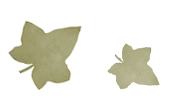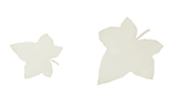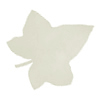|
The
Bladder - Urge Incontinence
Overactive Bladder
an article by Susun S. Weed
Step
0. Do Nothing
As the majority of cases of urge incontinence are
idiopathic, that is, they have no known cause, even
after extensive testing, spare yourself the health
risks of invasive tests.
Step
1. Collect Information
It is estimated that 34 million Americans deal with
overactive bladder, defined as an urgent and frequent
need to urinate, or urinating more than 10 times
in 24 hours.1 Most
are older than 40, and one-third to one-half are
men.
Urge incontinence comes on so quickly and so powerfully
that there is no time to get to a toilet, even if
you are standing right next to one! For some women,
even the thought or sight of a toilet causes leakage.
There are many causes of urge incontinence. Invasive
diagnostic tests requiring catheterizations are
best refused, however, as the results are often
inconclusive. In general - unless there is a known
cause such as an enlarged prostate, a bladder infection,
vaginal yeast overgrowth, interstitial cystitis,
fibromyalgia, or multiple sclerosis - urge incontinence/overactive
bladder is thought to be caused by abnormal nerve
signals to the bladder, which initiate spastic muscle
contractions and an often uncontrollable need to
urinate, even when the bladder is not full.
A bladder diary lists the times of day you urinate
(including leaks), the amount of urine you void,
what you drink and eat and when, and medicines you
took. Over a period of a week or two, patterns emerge
that can help you retrain your bladder.
“About 30% of women [with overactive bladders]
get better simply by understanding what’s happening
and thinking about it.”2
Step
2. Engage the Energy
A powerful visualization coupled with a physical
trigger can put you in control of your bladder,
fast. Choose an image, visualize it repeatedly,
then use it to help prevent leaks and urgency. If
you visualize for even two minutes a day, you will
get results faster than if you take drugs. If you
use the physical trigger while you visualize, eventually
it, alone, will be enough to control your urge incontinence,
you won’t need the visualization any more.
Sitting alone, in a tranquil environment (a bathtub
is fine), close your eyes and imagine vividly, using
all your senses: see the scene, taste it, smell
it, feel its texture, listen to it. As in a dream,
you can create whatever you want. Take many quiet
sessions to make your visualization real; don’t
try to do it all at once. Create your own visualization
or try one of these.
Visualize the nerve message between your bladder
and your brain as a stream of water; in your imagination,
install dams and locks to slow it down. When you
visualize, squeeze your fist in a slow rhythm.
Visualize the nerve pathway as a road; set up gates
or toll booths all along it, starting at the bladder
and working your way up to the brain. When you visualize
this, gently bite your lower lip.
Imagine a large, strong hand gently pushing up between
your legs and comforting you. When you do so, smile.
Homeopathic remedies for urge incontinence include:
Belladonna: if there are chronic spasms
Eupatorium pur.: bladder always feels full
Sulphura: urge is sudden and intense
Nux vomica: urge accompanied by pain
Uranium nitricum: burning pain
Biofeedback using electrical or pressure-sensing
devices can increase awareness of the bladder, foiling
urge incontinence. It is so well-studied, and so
effective in relieving incontinence, that Medicare
covers the cost.
Everyone who is incontinent has weak muscles. Those
with stress incontinence “deny the problem,
pay little attention to bladder signals, and are
surprised when a slight physical exertion forces
urine out. The urge patient, on the other hand,
is preoccupied with bladder signals … and rushes
to the toilet at the first signals. … the brain
learns to stop inhibiting the reflexive contractions
of the bladder …”
Leslie Talcott, director Perineometer Research Institute
Step
3. Nourish and Tonify
Retrain your bladder to relieve urge incontinence.
Since the bladder is only half full when urge begins,
countering the urge to urinate, and gradually lengthening
the time between visits to the toilet can work wonders.
With practice, the threshold of urge is raised and
the nerves no longer signal so frequently.
Food additives such as MSG, potassium sorbate, aspartame,
and food colorings aggravate urge incontinence.3
Vitamin B12 deficiency - common among vegetarians
and epidemic among vegans - can mimic MS, including
causing uncontrollable bladder spasms or urge incontinence.4 Vitamin B12, in its usable form, is available only
from milk, eggs, fish, and meat.
Including at least 25 grams of real fiber from whole
grains, beans, and nuts in the daily diet may significantly
ease urinary overactivity and urge incontinence.
Step
4. Stimulate/Sedate
For men with overactive bladders, herbalist Terry
Willard uses a tea of parsley leaf, corn silk, and
dandelion leaf to reduce urine acidity and bladder
irritability. When needed, he adds wild yam root
to soothe or valerian to calm.5
To counter the heat and reduce the inflammation
that underlies an overactive bladder, herbalists
in India suggest infusions of soothing herbs like
marshmallow root (Althea off.), plantain leaf (Plantago
species), or mullein leaf (Verbascum thapsus). For
those with severe problems, 1-4 tablespoons of powdered
turmeric (Cucurma longa) are added to the daily
quart of infusion.6
Saw palmetto berries, in tincture or tea, relax
the smooth muscle in the bladder neck and help reduce
overactivity.
Herbal nurse Martha Libster reminds us of the usefulness
of Chinese ephedra (ma huang) - to reduce mucus
surface swelling and relax spastic muscles - when
treating an overactive bladder.
Acupuncture can bring significant relief from urgency,
urge incontinence, and overactive bladder say researchers
at the Oregon Department of Health and Science University.
Four weekly bladder-specific acupuncture treatments
improved bladder capacity, reduced urgency and frequency,
and improved the quality of life as well as drug
or behavioral therapies.7
If you can’t get the knack of doing pelvic
floor exercises (Kegels), don’t despair. Physical
therapists, personal trainers for your bladder,
can help you with these critically important exercises.
Step
5a. Use Supplements
A deficiency of magnesium triggers muscles spasms
and incontinence.8 Supplements of 200-600mg daily may help.
Vegans and vegetarians bothered by overactive bladders
probably lack vitamin B12 - a critical nutrient
found only in animal foods. Supplements or, better
yet, a healthier diet that includes organic dairy
and meat, are indicated. You may wish to be tested
for methylmalonic acid level, a better indicator
of deficiency than tests for vitamin B12 itself.9
Step
5b. Use Drugs
Some drugs - such as “water pills”
and tranquilizers - cause or aggravate an overactive
bladder. Instead, use herbal diuretics such as corn
silk, burdock root, and dandelion; they calm the
bladder. Tranquilize with bladder friendly St.Joan’s
wort (Hypericum perforatum) tincture, a dropperful
3-6 times a day, or motherwort (Leonurus cardiaca)
tincture, 15 drops 4-8 times a day.
Antimuscrinic or anticholerinergic drugs relax the
bladder’s detrusor muscle, extending the time
between urge and voiding. They are especially useful
for those dealing with traumatic incontinence, but
are often suggested as a bridge to control leakage
from urge incontinence while lifestyle changes take
effect. I wonder how useful this is, as antimuscrinic
drugs can take up to three months to be effective,
and “side effects may be nearly as troublesome
as the incontinence itself.”10
Detrol (tolterodine), Ditropan (oxybutynin), Enablex
(darifenacin), Sanctura (trospium chloride), and
Vesicare (solifenacin), can calm an overactive bladder,
but dry the mouth and the eyes and cause memory
impairment as well as constipation and heart arrhythmias.
In one study, three-quarters of those taking 4mg
of tolterodine and 0.4mg of tamsulosin, and two-thirds
of those taking the placebo, reported improvement
after three months.11
Although lack of estrogen does not cause incontinence,
topical vaginal estrogen cream is a fairly safe,
and very easy, way for older women to calm a hyperactive
bladder.
Tofranil (imipramine) is an antidepressant that
is used in conjunction with an antimuscrinic to
tighten the urinary sphincter and relax spasming
bladder muscles. Dizziness, drowsiness, and low
blood pressure are side effects more frequent in
those over 60.
Step
6. Break and Enter
In Europe, injections into the lining of the bladder
block the nerve impulse that triggers overactive
bladder. This is not yet approved in the USA. But
injections of Botox are. The effects - significant
increase in bladder capacity before urgency - mimic
bladder retraining but only last 6-12 months.
Surgical implantation of a sacral neuromodulator
can relax bladder muscles and relieve overpowering
urges to urinate. This is obviously a last resort.
1.
“Overcoming overactive bladder,” Women's
Health Advisor, April 2007.
2. “Get it under control,” John Hopkins
Medical Center, 2007.
3. “Calming an overactive bladder,” Mark
Hyman MD, Alternative Medicine, April 2007.
4. Ibid, Alt Med, April 2007.
5. “Best remedies for a healthy bladder,”
Herbs for Health, April 2006.
6. Ibid; Healthy bladder,” Herbs for Health,
April 2006.
7. Acupuncture aids overactive bladder,” Obstetrics
& Gynecology, July 2005.
8. British Journal of Ob/Gyn, 105:667-669, 1998.
9. (46) Alt Med, April 2007.
10. “What is Urinary Incontinence?” HealthNews,
March, 2001.
11. “Two-drug combo improves overactive bladder,”
Focus on Healthy Aging, Feb 2001 (from an article
in JAMA, Nov 2006).
Legal
Disclaimer: This content is not intended to replace
conventional medical treatment. Any suggestions
made and all herbs listed are not intended to diagnose,
treat, cure or prevent any disease, condition or
symptom. Personal directions and use should be provided
by a clinical herbalist or other qualified healthcare
practitioner with a specific formula for you. All
material in this article is provided for general
information purposes only and should not be considered
medical advice or consultation. Contact a reputable
healthcare practitioner if you are in need of medical
care. Exercise self-empowerment by seeking a second
opinion.
Susun
Weed
PO Box 64
Woodstock, NY 12498
Fax: 1-845-246-8081Visit Susun Weed at: www.susunweed.com
and www.ashtreepublishing.com
For permission to reprint this article, contact
us at: susunweed@herbshealing.com
Vibrant, passionate, and involved, Susun Weed has
garnered an international reputation for her groundbreaking
lectures, teachings, and writings on health and
nutrition. She challenges conventional medical approaches
with humor, insight, and her vast encyclopedic
knowledge of herbal medicine. Unabashedly pro-woman,
her animated and enthusiastic lectures are engaging
and often profoundly provocative.
Susun
is one of America's best-known authorities on herbal
medicine and natural approaches to women's health.
Her four best-selling books are recommended by expert
herbalists and well-known physicians and are used
and cherished by millions of women around the world.
Learn more at www.susunweed.comSusun Weed’s
books include:
Wise
Woman Herbal for the Childbearing Year
Author: Susun S. Weed. Simple, safe remedies for
pregnancy, childbirth, lactation, and newborns.
Includes herbs for fertility and birth control.
Foreword by Jeannine Parvati Baker. 196 pages, index,
illustrations.
Retails for $11.95 Order at: www.ashtreepublishing.com
Healing Wise
Author: Susun S. Weed. Superb herbal in the feminine-intuitive
mode. Complete instructions for using common plants
for food, beauty, medicine, and longevity. Introduction
by Jean Houston. 312 pages, index, illustrations.
Retails for $15.95 Order at: www.ashtreepublishing.com
NEW
Menopausal Years the Wise Woman Way
Author: Susun S. Weed. The best book on menopause
is now better. Completely revised with 100 new pages.
All the remedies women know and trust plus hundreds
of new ones. New sections on thyroid health, fibromyalgia,
hairy problems, male menopause, and herbs for women
taking hormones. Recommended by Susan Love MD and
Christiane Northrup MD. Foreword by Juliette de
Bairacli Levy. 304 pages, index, illustrations.
Retails for $16.95. Order at: www.ashtreepublishing.com
For more info on menopause, visit: www.menopause-metamorphosis.com
Breast
Cancer? Breast Health!
Author: Susun S. Weed. Foods, exercises, and attitudes
to keep your breasts healthy. Supportive complimentary
medicines to ease side-effects of surgery, radiation,
chemotherapy, or tamoxifen. Foreword by Christiane
Northrup, M.D. 380 pages, index, illustrations.
Retails for $14.95 Order at: www.ashtreepublishing.com
This
article is © copyright Susun
S. Weed Republished here with kind permission. |
|












